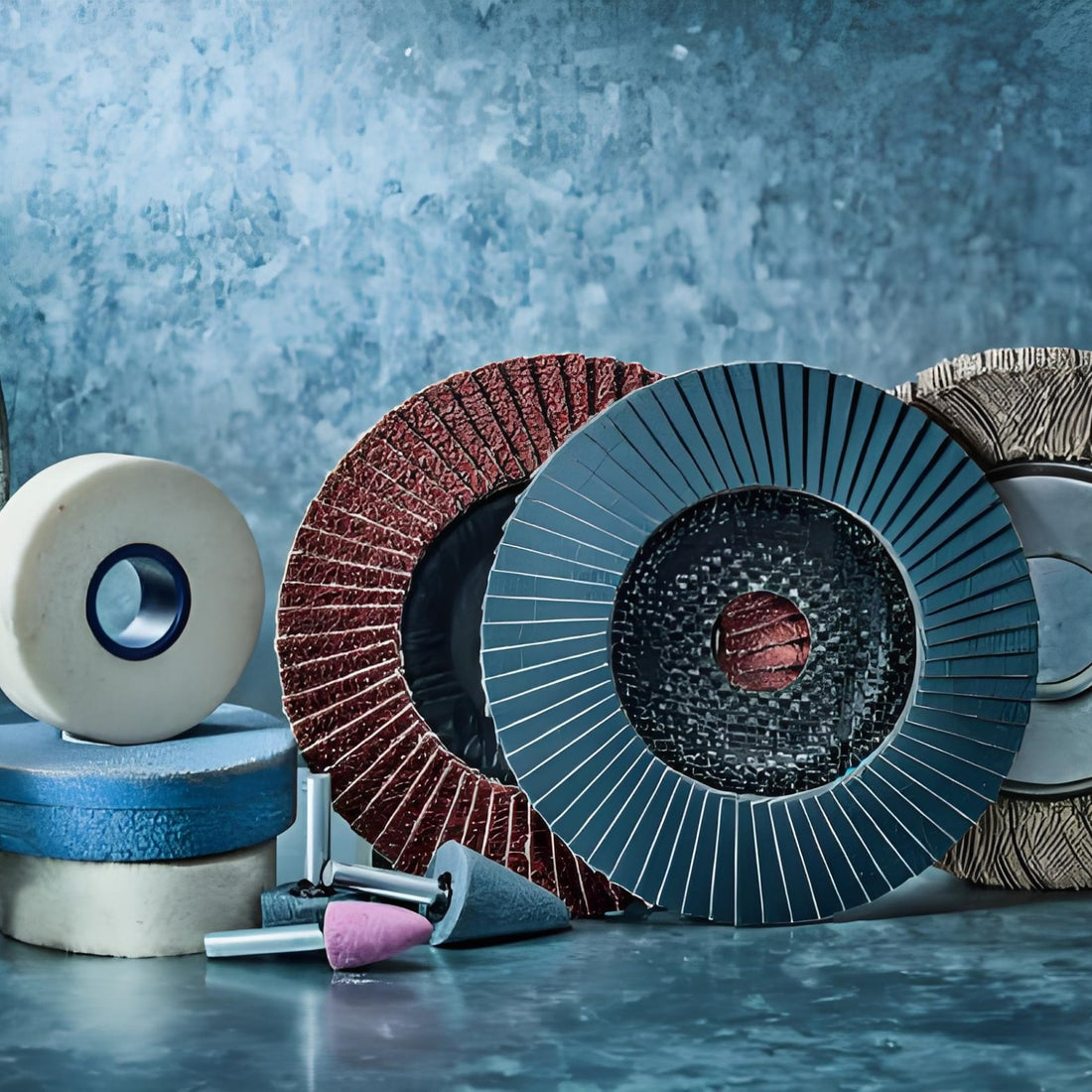Using a cutting disc on an angle grinder is a common practice across various industries and DIY projects. However, it is essential to understand the details, safety measures, and best practices involved to ensure effective and safe use. This comprehensive guide will delve into the details of using cutting discs on angle grinders, covering types of discs, their applications, safety tips, and recommendations.
Understanding Cutting Discs
Cutting discs , also known as fast cutting discs , are specialized tools designed to cut materials. They differ from grinding discs primarily by their thinness, which allows for precise cuts. Here's a closer look at their features:
- Material Composition: Cutting discs are made of abrasive grains bonded together with a binder. Common materials include aluminum oxide, zirconium alumina, and silicon carbide.
- Thickness: Typically, cutting wheels range from 0.045 to 0.125 inch thick. Thinner wheels are ideal for precision cutting, while thicker wheels provide durability.
- Size: The size of the cutting disc should match the angle grinder. Common diameters include 4.5 inch, 5 inch and 7 inch.
Types of Cutting Discs
Cutting discs come in several types, each suited to specific applications:
- Metal Cutting Discs: These are designed to cut ferrous and non-ferrous metals. They are commonly used in metal fabrication, auto repair, and construction.
- Masonry Cutting Discs: These discs are used for cutting concrete, stone and brick. They are often used in construction and masonry work.
- Diamond Cutting Discs: These discs are embedded with diamond particles, making them ideal for cutting hard materials such as tile, stone and glass.

Cutting Disc Applications
Cutting discs are versatile and can be used in a variety of applications including:
- Metal Manufacturing: Cutting of metal sheets, pipes and rods.
- Automotive Repair: Cutting exhaust pipes, bolts and body panels.
- Construction: Cutting of reinforcing bars, concrete and masonry.
- DIY Projects: Home improvement tasks such as cutting tile or metal for custom builds.

Using Cutting Discs on Angle Grinders
Using a cutting disc on an angle grinder involves several steps and safety precautions:
Steps to Use Cutting Discs
- Selecting the Right Wheel: Make sure the cutting wheel is compatible with the material you want to cut and fits your angle grinder.
- Inspect the Disc and Grinder: Check the disc for damage or wear and make sure the angle grinder is in good working condition.
- Secure Material: Clamp or secure the material you are cutting to prevent movement.
- Installing the Cutting Wheel: Follow the manufacturer's instructions for attaching the cutting wheel to the angle grinder.
- Use Safety Equipment: Wear safety glasses, gloves, hearing protection and appropriate clothing.
- Turning on the Grinder: Hold the angle grinder firmly and turn it on. Allow the wheel to reach full speed before starting the cut.
- Making the Cut: Apply light pressure and let the blade do the work. Avoid forcing the blade through the material.

Safety Precautions
Safety is paramount when using cutting discs on angle grinders. Here are some key safety tips:
- Eye Protection: Always wear safety glasses to protect your eyes from flying debris.
- Hand Protection: Wear gloves to protect your hands from sparks and sharp edges.
- Hearing Protection: Angle grinders can be loud, so wear earplugs or protective headphones.
- Clothing: Wear long sleeves and avoid loose clothing that could get caught in the grinder.
- Work Area: Make sure your work area is free of flammable materials and has adequate ventilation.
Common Problems and Troubleshooting
When using cutting discs on angle grinders, you may encounter some common problems:
- Disc Breakage: This can occur if the disc is subjected to excessive pressure or used at an incorrect angle. Always use the disc as intended and avoid side loading.
- Uneven Cuts: Uneven cuts can result from improper handling or a worn blade. Ensure consistent handling and replace the blade when necessary.
- Overheating: Overheating can cause the disk to crack or degrade. Take breaks to allow the disk to cool and avoid excessive pressure.
Recommendations for Choosing Cutting Discs
When selecting cutting wheels, consider the following factors:
- Material Compatibility: Choose a blade designed for the specific material you are cutting.
- Disc Size: Make sure the disc size matches your angle grinder.
- Abrasive Grit: Select the appropriate abrasive grit for the material. Aluminum oxide is suitable for ferrous metals, while silicon carbide is best for non-ferrous metals and masonry.
- Reputable Brands: Choose cutting discs from brands known for their quality and safety.
Comparison Table: Cutting Discs for Angle Grinders
| Feature | Metal Cutting Discs | Masonry Cutting Discs | Diamond Cutting Discs |
| Material | Aluminum oxide, zirconium | Silicon carbide | Diamond |
| Typical Thickness | 0.045 to 0.125 inch | 0.045 to 0.125 inch | 0.045 to 0.125 inch |
| Applications | Metal fabrication, automotive repair | Construction, masonry | Tiles, stone, glass |
| Durability | High | Moderate | Very high |
| Precision | High | Moderate | High |
| Cost | Low to moderate | Low to moderate | High |
Conclusion
Using a cutting disc on an angle grinder is a versatile and effective method for cutting a variety of materials. By understanding the different types of cutting discs, their applications, and following proper safety procedures, you can achieve precise cuts while ensuring safety. Always choose the right disc for the job, maintain your tools, and adhere to safety guidelines to get the best results from your angle grinder and cutting discs.

